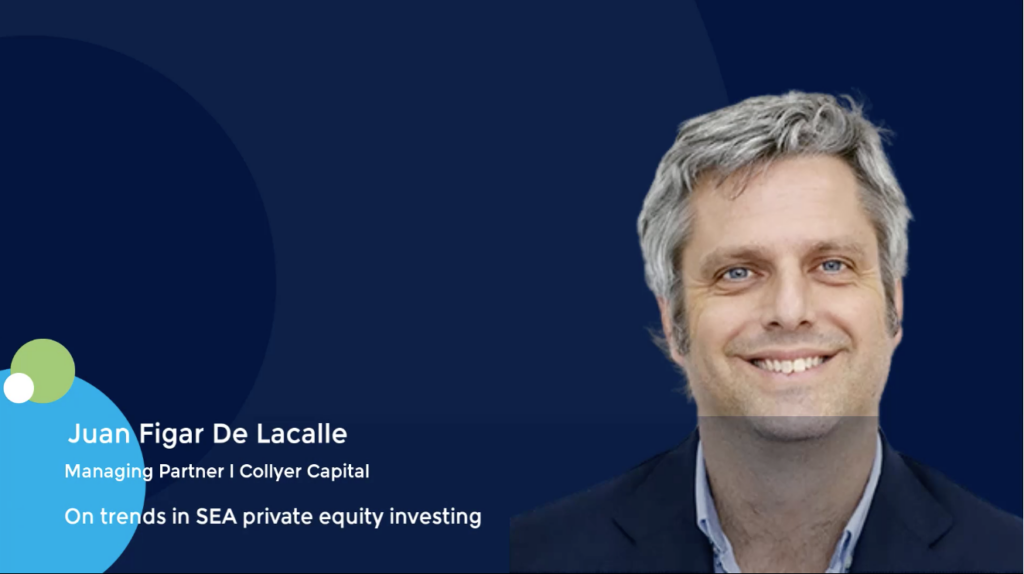PE valuations: Asia GPs face calls for more frequent reporting, granular disclosure
- Valuations are becoming more subjective as GPs cope with macro uncertainty
- Regulatory pressure for accuracy is mounting, but most managers are unfazed
- Co-investment, semi-liquid funds, continuation vehicles will prompt more scrutiny
The balance of art and science in private markets valuation assessments appears to be tilting toward art as uncertainty variables proliferate and quantitative inputs become sparser.
At the highest level, the trend can be attributed to a general sense of late-cycle dislocation, which has translated into greater anxiety about the true valuation of an asset and the ability to discern those numbers in a stagnant market.
Jonathan Chan, a Hong Kong-based partner in PwC’s valuation advisory team, observed that regulatory pressure is mounting to impose higher quality valuation disclosures across industries, including private equity.
He pointed to a circular from Hong Kong’s Securities & Futures Commission (SFC) earlier this month warning that some asset managers were adopting inappropriate valuation methodologies with an intention to disguise investment losses.
Chan has also seen an uptick in requests from fund managers for valuation assessment support from the likes of PwC. To a significant degree this work involves qualitative assessments of whether some products and services are still competitive.
“Subjectivity in marking investments has increased tremendously in recent years due to stock market volatility and lack of new financing rounds, so rather than just looking at market multiples, investors need to triangulate a range of valuations using a variety of approaches,” he said.
“Investors or managers should put in more effort in re-valuing investments because the environment is so volatile. A lot of products and services may not be what investors expected them to be only a couple years ago due to developments such as AI [artificial intelligence].”
Harder evidence that dubious judgement calls are informing private equity valuations came via a survey of more than 600 funds last July by UK-based secondaries investor Clipway. The key takeaway is that managers are not only reluctant to mark down underperforming assets, but there is a negative correlation between company growth and valuation.
Clipway found that among companies posting increased EBITDA over various periods of time, a slight majority were marked with increased valuations. Amongst the companies posting negative EBITDA, the vast majority were marked with increased valuations.
Speed vs accuracy
Much of the problem here lies in the idea that cost or the last financing round never equate to fair value as defined by the International Financial Reporting Standards (IFRS). This is essentially what a seller would receive in an order transaction (willing buyer-willing seller) using market participant assumptions of the measurement data as of the valuation date.
Adoption of IFRS principles and International Private Equity and Venture Capital Valuation (IPEV) guidelines is widespread in the industry. But questions are multiplying around the nature of the variables being slotted into these equations, especially amongst small to midcap managers that do most of their number crunching in-house.
One point of contention in Asia is the repeat calculation of an illiquidity discount. This is a judgement call factored into valuation at the time of acquisition. Compounding the potential for disagreement, illiquidity discounts are sometimes continuously reapplied with respect to rapidly changing public market comparables at later dates, effectively valuing a private asset on a liquid basis.
David Larsen, a US-based managing director in the alternative asset advisory practice at Kroll, believes that as more capital is put to work in private markets, LPs will require greater rigor around valuations. In uncertain macro conditions, these investors are increasingly obliged to adjust their asset allocations and prepare their own financial statements for various stakeholders.
“Further, you’ve got an increasing number of retail-esque products, where the need for more frequent and timely valuations is expanded. That’s a starting point for monthly or daily valuation that is now being pushed more and more in the marketplace,” Larsen said.
“There are certain things where you can’t just say, ‘I’m buying today at 100 and exiting in five years at 200, and I don’t care what happens in between.’ You do care because it could go up to 1,000 or drop to 50, and LPs in these more frequent products are making asset allocation decisions based on the fair value during that hold period.”
It’s worth noting that international accounting standards generally only provide best-practice frameworks for establishing valuations, not the frequency at which they should be reported.
That ambiguity has left the door open for a longstanding debate around the tension between relevance and reliability. While higher frequency implies greater relevance at each disclosure date, the longer-gestating reports are arguably more reliable.
Kelvin Yap, a Singapore-based managing director at HarbourVest Partners and a chartered accountant, is tracking a wave of funds – notably in Australia – that provide monthly net asset value (NAV) reports, usually in compliance with LP requirements. Figures delivered at this frequency are seen as inferior versus quarterly reports, which in turn are inferior to annual audits.
Furthermore, there is a sense that an escalation in the trend of high-frequency reporting could exacerbate an industrywide trend of manager consolidation. In this sense, a well-meaning attempt to protect underlying investors could deliver them a smaller universe to invest in.
“If the whole industry starts adopting monthly reporting as a required service level, it makes it a lot more difficult for small-time fund managers to exist. You can only provide all these services if you’re very large and sophisticated, so it creates a bit of a moat for them,” Yap said.
If monthly valuations can achieve the same accuracy as quarterlies or annuals, it could open up a more systematised and dynamic secondaries market in private equity. But the intensity of such valuation practices would likely require additional technology or outsourced services – costs many LPs may be reluctant to bear.
“Consider it in terms of combinations. You have a choice between combination A, which offers standard valuation reporting and full returns, or combination B, which provides enhanced valuation reporting but a reduction in returns by a certain percentage,” Yap added.
“By presenting it this way, the choice may elicit a different reaction from investors compared to simply asking them if they want more reporting. More likely, investors would prefer to retain the percentage of returns instead of receiving the additional information.”
New normal?
The dilemma remains theoretical for most of Asian private equity. Many GPs in the region interpret the tension around valuations as a manageable symptom of LP disquiet in a difficult phase of the market. Most of the GPs contacted by AVCJ for this story were unfazed by the notion of a new normal in terms of heightened valuation rigor.
India and Southeast Asia-focused Everstone Group, for example, has received no new requests in this vein from LPs, which largely represent the US and Europe. Like most established firms, it follows IPEV guidelines, reporting quarterly with an annual audit. Each update includes a 15-20-page written summary explaining the rationale behind any subjective judgements.
“In a private equity business, things don’t change month to month. Strategy doesn’t change quarter-to-quarter. You might have some variations quarter-to-quarter in terms of performance but that doesn’t change the value of the holding unless you’re making it very aggressively,” said Rajesh Mehta, chief business officer at Everstone.
“We do it quarterly because that’s the industry standard, but I would say six months would be appropriate. I would not want to see the industry standard move to a month.”
Still, there is a case to be made that managers globally need to up their game, and their LPs have noticed.
Last June, the Australian Prudential Regulation Authority (APRA) published a survey of 45 local superannuation investors, finding that 18 of them had challenged, rejected, or overridden valuations provided by an external party in the prior 12-month period.
They also singled out private equity as the most poorly reported asset class in private markets, with 14 out of 45 super funds saying valuations were not reported on at least a quarterly basis. This compared to 10 in real estate, eight in infrastructure, and five in private credit.
Pressure from super funds on this point has a limited effect locally, as most homegrown managers are simply too small to accommodate this class of investor. Advent Partners, a firm with assets under management of around AUD 1bn (USD 670m), for example, reports valuations quarterly to IPEV standards but attributes less than 2% of its capital base to super funds.
Robert Radcliffe-Smith, a managing partner at Advent, observed a significant upswing in European LP requests for bespoke reports on companies’ underlying valuations during the pandemic lockdowns, but this has mostly levelled off.
“If they’re holding a co-investment in their books, they focus more on that than they would a fund investment,” Radcliffe-Smith said. “A fund investment might have seven to eight underlying investments, and they’ll probably more readily accept the NAV. But for a co-investment, about half of our co-investors will ask annually, ‘How did you actually value the companies?”
Paradigm shift
Change may come more noticeably in Japan, where the ongoing implementation of IFRS accounting standards will require private equity funds to fair value assets by 2027.
Kroll’s Larsen described the transition as a paradigm shift that will require local managers accustomed to the less rigorous Japanese generally accepted accounting principles (J-GAAP) to change their internal infrastructure and mindset.
“We’ve had a number of discussions in Japan with managers that want to at least educate themselves, make themselves familiar with how the rest of the world does it,” he said.
For the most established GPs, this is non-event. Sunrise Capital, formerly CLSA Capital Partners, has been reporting valuations in accordance with IFRS norms since its inception in 2006. But Shota Kuwaki, an executive director at the firm, senses there could be ripples across the wider industry.
“There’s a component of time that both appreciates and depreciates valuations, which usually doesn’t get formally shown by the current J-GAAP standards, so it’s been very difficult for foreign LPs to assess how an asset is doing with GPs that only do valuations based on J-GAAP,” Kuwaki said.
“So, [IFRS] being uniformly applied is definitely a positive for foreign LPs. Domestic LPs are generally positive on the transition but might not completely entertain it.”
The thinking here is that many domestic LPs have a conservative streak that is in some ways well served by the current standard. Where IFRS is coloured by managers’ interpretations of the facts, J-GAAP does not allow for much margin of error. Assets do not easily stray from cost in J-GAAP, up or down, and when they are marked down, they cannot be marked back up.
For firms already adhering to international standards in Japan or elsewhere, meaningful change in valuation protocols will likely be driven more by increased operational sophistication than regulation.
Broader industry trends around the uptake of GP-led secondaries, fund finance, and co-investment will pile pressure on valuation processes simply because there will be more stakeholders relying on the accuracy of those numbers at points in time that do not coincide with an annual audit.
This could extend to some LPs, such as family offices or endowments, suffering from a lack of distributions and therefore needing to borrow against their PE holdings to fund ongoing operations.
Meanwhile, the proliferation of continuation vehicles (CVs) may eventually change methodologies for valuing underlying assets.
In this instance, it will not be sufficient to simply run a proper process or engage third-party verification. There may need to be a competitive process to establish value such as a so-called soft sounding, whereby a separate capital raising quietly tests market appetite.
“There’s always a lot of discussion around conflicts of interest when a firm does a continuation fund, but to even have those discussions, you have to have confidence that the valuation isn’t being manipulated up or down by whichever party,” said Mark Chiba, chairman and a partner at North Asia-focused Longreach Group.
“As you see more continuation fund activity – which you probably will – that will be another test point for valuations.”
Finding a way
Longreach, like Sunrise, reflects the conservative style of valuations in Japan, its core market. Both firms, reporting to international fair value standards, often hesitate to mark assets up.
Chiba showed AVCJ a two-inch stack of paper, saying it was his firm’s April valuation committee notes for six to eight companies. Kuwaki highlighted one episode where a portfolio company notched negative EBITDA for the year, so it was dutifully marked down to zero, even though it was positioned for success – and eventually did generate a 4x return.
It’s a culture at odds with the findings of the Clipway study that may never produce a statistical counterpoint. Yet it suggests that as private equity increasingly embraces complex fundraising, investment, and liquidity solutions that hinge on hard-won valuation agreement, GPs will generally find the numbers they need to do business.
“The whole idea of private equity is to get away from the tyranny of quarterly numbers, which is the public markets’ issue. So, while fair market valuation integrity is always essential, it doesn’t make sense to load on lots of extra costs just around valuation,” Chiba said.
“But we do know that as valuations are increasingly used for more things than just measuring value – for example portfolio level leverage and DPI strategies of LPs – they will become more important.”













